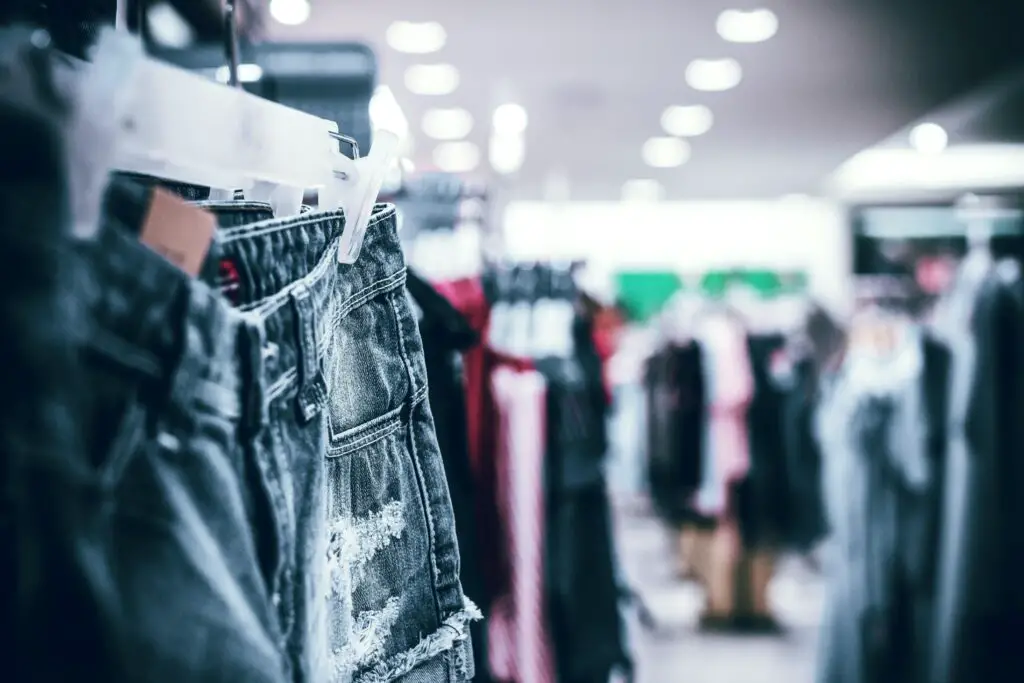How To Sell Your Second-Hand Clothes? In recent years, selling second-hand clothes has emerged as a significant trend, transforming closets around the world into potential revenue streams. This surge in popularity can be attributed to various factors that benefit both the seller and the buyer. Not only does selling second-hand clothes present an opportunity to earn extra income, but it also promotes sustainability by extending the life of clothes and reducing waste. Additionally, it serves as a practical solution for decluttering, helping individuals manage their wardrobes more efficiently.
This article aims to provide a comprehensive guide on how to successfully sell second-hand clothes. From the initial steps of sorting and inspecting your garments to capturing their best angles in photographs, setting the right price, writing captivating descriptions, choosing the best platform for your needs, managing shipping, and offering excellent customer service. Each step of the process will be carefully explained, providing you with valuable insights and practical tips to turn your used clothes into cash. Whether you’re a seasoned seller or a beginner in the world of second-hand clothing sales, this article will equip you with the knowledge you need to succeed.
Contents
Sorting and Inspection
The first step in the process of selling your second-hand clothes is sorting through your wardrobe and selecting items in good condition. The state of the clothing you choose to sell can significantly influence the likelihood of making a sale, so it’s essential to be discerning during this step. If a piece is worn out, stained, or torn, it’s less likely to attract buyers. Instead, focus on items that you’ve barely worn or that are still in great shape.
When inspecting clothes for resale, here are a few things to look out for:
- Overall condition: This includes wear and tear, pilling, fading, or stretching. Clothes that have kept their shape and color are more likely to sell.
- Stains and spots: Examine each item carefully in good lighting to catch any stains or discolorations. Even small marks can be a deal-breaker for potential buyers.
- Tears or holes: Make sure to check the item thoroughly, especially in areas like the underarms, seams, and zippers where damage often occurs.
- Brand and size labels: Ideally, the clothing item will still have its brand and size labels intact. These details can often influence a buyer’s decision.
Remember, buyers appreciate honesty. If an item has minor flaws but is still sellable, make sure to disclose these in your description. This not only helps maintain a good reputation but also saves you potential trouble down the line with returns or negative feedback. By being selective and thorough in the sorting and inspection phase, you’re laying a strong foundation for your venture in selling second-hand clothes.
Preparation
After sorting and inspecting your clothes, the next crucial step in selling your second-hand clothes is preparation. This typically involves cleaning and, in some cases, ironing your clothes. The importance of this step cannot be overstated as the overall presentation significantly impacts a buyer’s first impression and subsequent purchase decision.
Cleaning your clothes before selling is essential. A clean garment not only looks better but also smells fresh, which can be a key selling point. Be sure to follow the garment’s care instructions to avoid damaging it. Remove any stains and ensure there’s no lingering odor such as smoke or pet smells. If necessary, consider professional cleaning for high-end items to ensure the best results.
Ironing is another aspect of preparation, particularly important for clothes made from wrinkle-prone materials. A well-ironed garment looks more attractive in photos and shows potential buyers that you have taken good care of the item.
Here are some additional tips to make your clothes look as presentable as possible:
- Proper folding and storage: After cleaning and ironing, fold your clothes neatly or hang them up to prevent creasing. Store them in a clean, dry place away from pets and odors until they’re sold.
- Minor repairs: If an item has loose buttons or a fallen hem and you have the skills to fix it, doing so could add value to the item and increase its sellability.
- Dealing with pilling: If an item has minor pilling (those small balls of fuzz), using a fabric shaver can make it look almost new.
- Shoe care: If you’re selling shoes, clean the soles and uppers, and consider using a shoe deodorizer. Including the original box, if you have it, can also be a selling point.
Photography So, How To Sell Your Second-Hand Clothes?
One of the most critical aspects of selling second-hand clothes online is photography. Good photographs can significantly increase your chances of selling an item, as they are often the first thing potential buyers see when browsing listings.
Here’s how to take good photos of the clothes you’re selling:
- Lighting: Natural light is your best friend when photographing clothes. It reveals the true colors and textures of the fabric, which are important details for potential buyers. If possible, try to take photos during the day near a window or even outside. Avoid using flash as it can distort colors and create harsh shadows.
- Background: Use a simple, uncluttered background to make your clothes stand out. A plain wall, a wooden floor, or a simple sheet can work well. The key is to ensure that nothing distracts from the item you’re selling.
- Angles: Photograph your clothes from different angles to give buyers a comprehensive view. This includes the front, back, side, and close-up shots of any unique features or detailing.
- Presentation: Consider the best way to present your clothes. Flat lays can work well for items like t-shirts and jeans, while hanging or even modeling may be better for dresses or jackets. If you’re selling shoes, include pictures of the tops, sides, bottoms, and insides.
- Detail shots: Close-up photos of tags showing the brand and size, unique features, or any flaws are important. This gives the buyer all the information they need about the item’s condition and authenticity.
Pricing
Correctly pricing your second-hand clothes can be a balancing act. You want to set a price that’s fair to you as the seller but also attractive to potential buyers. Understanding how to price second-hand clothes can be a key factor in whether or not they sell, and how quickly.
When determining prices, consider these factors:
- Brand: Designer and high-end brands typically resell for higher prices than fast fashion or unbranded items.
- Condition: Clothes in excellent condition or new with tags can be priced higher than those with signs of wear or minor damage.
- Rarity: If an item is rare or vintage, it might be worth more. Limited edition pieces or styles that are no longer available can also command higher prices.
- Season: The season can impact pricing. For example, coats might sell for more in the fall and winter, while swimsuits may fetch higher prices in the spring and summer.
Writing Descriptions
An essential aspect of selling second-hand clothes is writing clear, honest, and detailed descriptions. The description provides potential buyers with necessary information about the item, helps to build trust, and can significantly impact whether or not a buyer decides to purchase your item.
When writing a description, make sure you include:
- Basic Information: Start with the basics. This includes the brand, size, color, and type of item (e.g., dress, shirt, jeans).
- Material: List the fabric/material of the item. Some buyers may prefer certain materials over others, and some may be allergic to specific fabrics.
- Condition: Describe the condition of the item honestly. Mention if it’s new with tags, gently used, or if there are any flaws.
- Measurements: Including measurements can be very helpful, as sizes can vary greatly between brands. For clothing, this could include length, waist size, chest size, etc. For shoes, the length and width of the insole can be helpful.
- Unique Features: Highlight any unique features or details. This could include embroidery, special buttons, a unique print, etc.
- Care Instructions: If possible, include care instructions for the item. This can be helpful for the buyer and show that the item has been well cared for.
- Reason for Selling: While not necessary, some sellers choose to include why they’re selling the item. This can help tell a story and create a connection with the buyer.
Choosing a Platform
Choosing the right platform to sell your second-hand clothes is a critical step in the process. Each platform has its unique audience, selling procedures, and fees. Here’s a comparison of popular platforms and what they offer:
- eBay: One of the most well-known platforms, eBay gives you access to a global audience. It allows for auction-style or fixed-price listings. However, it does charge listing and selling fees, and the competition can be high.
- Depop: Popular among younger buyers, Depop is a great platform if you’re selling vintage, unique, or branded streetwear items. It has a social media-like interface which makes it easy to use, but it does charge a 10% fee on sold items.
- Poshmark: Poshmark is a social commerce platform where you can list items for sale or trade. It’s known for its community of fashion enthusiasts and is a great place to sell brand-name and designer items. Note that Poshmark does take a commission on sales.
- ThredUp: This is an online consignment and thrift store. You send in your clothes, and they do the listing, pricing, and selling for you. While this is convenient, you do have less control, and they take a substantial commission.
- Facebook Marketplace: An option for local, in-person sales, Facebook Marketplace allows you to sell to people in your community. This means no shipping hassle or costs, but it may take longer to sell if you live in a smaller city or town.
Shipping
Shipping is a crucial aspect of selling second-hand clothes online. How you package your items for shipment can impact their condition upon arrival, and the shipping method you choose can influence the overall cost and delivery speed.
Here’s how to package and ship clothes:
- Packaging: Start by folding your items neatly. Place them in a clear plastic bag to protect them from moisture during transit. Use a suitable mailing bag or box, ensuring it’s the right size to hold your item without it being squashed or moving around too much.
- Presentation: Consider including a thank-you note or packing slip for a professional touch. This can enhance the buyer’s unboxing experience and leave a positive impression.
- Labeling: Ensure your shipping label is clearly printed and securely attached to your package. This helps avoid any delivery mix-ups.
Remember, shipping is an integral part of the customer’s experience. Efficient, well-considered shipping practices can lead to positive reviews and repeat customers, helping you sell more second-hand clothes in the long run.
Customer Service
Customer service is a critical component of successfully selling second-hand clothes. Good communication not only facilitates sales but can also lead to repeat customers and positive reviews, which can enhance your reputation as a seller.
Here’s why good communication and customer service are important:
- Building Trust: Responding promptly and professionally to potential buyers’ questions shows that you’re a reliable seller, which can build trust and increase the likelihood of sales.

- Resolving Issues: If there’s a problem with an order, good communication can help resolve the issue to everyone’s satisfaction. This might involve explaining the situation, offering a refund or replacement, or finding another solution.
Here are some tips for dealing with questions or issues from buyers:
- Be Responsive: Try to answer questions from potential buyers as quickly as possible. If you leave them waiting for too long, they might lose interest or buy from someone else.
- Be Clear and Polite: Keep your communication professional. Use clear, polite language, and avoid jargon. Even if a buyer is being difficult, stay calm and respectful.
- Provide Detailed Responses: When answering questions, provide as much information as you can. This helps the buyer make an informed decision and shows that you know what you’re selling.
- Take Responsibility: If there’s an issue with an order, acknowledge it, apologize, and find a solution. This could involve offering a refund or replacement, or, in some cases, accepting a return.
Conclusion
Selling second-hand clothes is more than a financial endeavor—it’s a practical way to declutter, an exciting venture into the world of commerce, and a positive step towards sustainable living. From sorting and inspecting your clothes, preparing them for sale, taking high-quality photos, setting the right price, writing detailed descriptions, choosing the best platform, and managing shipping, to providing excellent customer service, we’ve covered the essential steps to succeed in this venture.
Now, armed with these practical tips and insights, it’s time to dive in and begin your journey of selling second-hand clothes. Remember, each step in this process is an opportunity to learn and grow as a seller. The process may seem daunting at first, but with a bit of effort, the satisfaction of making your first sale and seeing your clothes find a new home can be immensely rewarding.
Selling second-hand clothes not only gives your garments a second lease on life, but also contributes to a more sustainable fashion industry. By extending the life of clothes, we can reduce waste and make the most of the resources used in clothing production. So, as you embark on this journey, know that you’re also making a positive impact on our planet.
Good luck, and happy selling!


